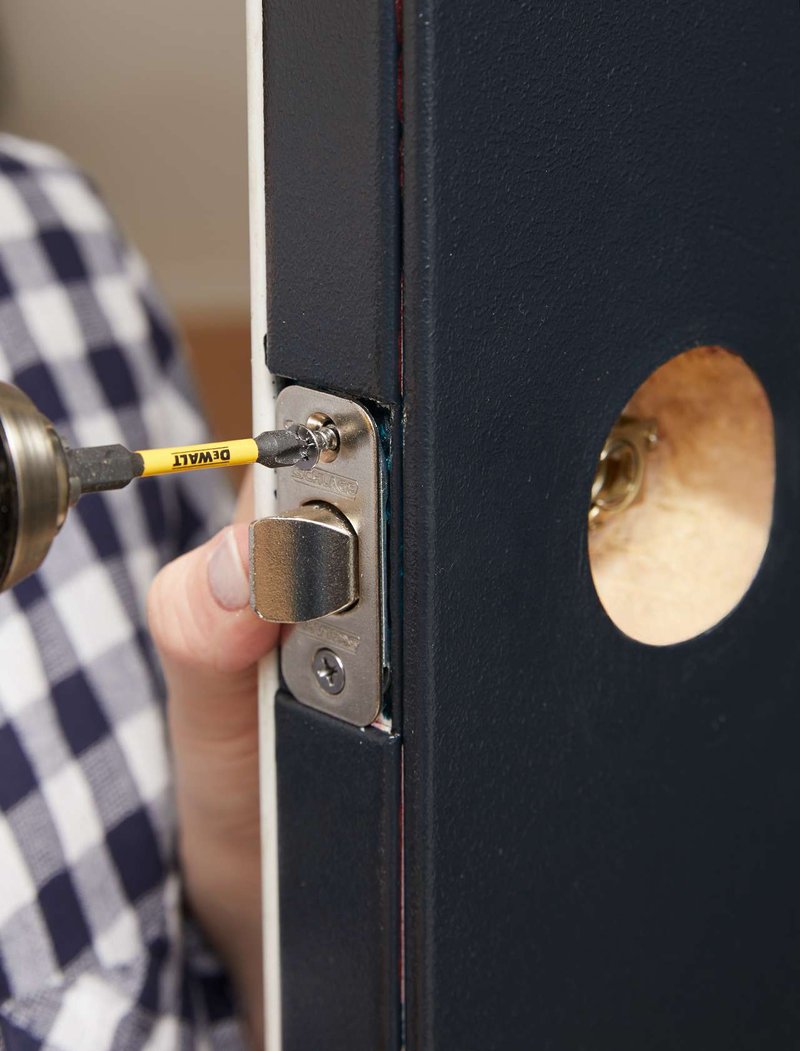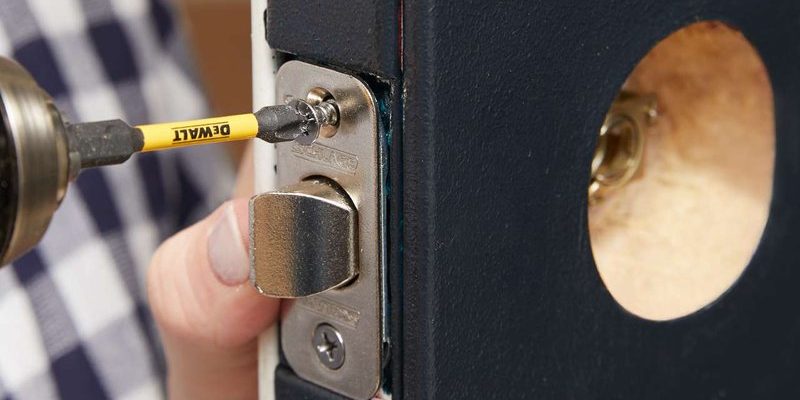
Here’s the thing: a latch bolt is a small part, but it does a big job. It slides in and out as you turn the handle, catching onto the strike plate on the door frame to keep your door closed. If things aren’t lined up just right, your door can stick, bounce open, or refuse to latch at all. It feels like a big problem, but with a little time, a screwdriver, and a basic understanding of how these locks work, you can get your door closing like butter again. Let’s break it down together—no handyman skills required.
What Causes a Handleset Latch Bolt to Stick or Misalign?
Before you start fiddling with screws or parts, it helps to know what can go wrong with a handleset latch bolt. You might be wondering: why do these things even get misaligned in the first place? There’s actually a handful of reasons—none of them especially dramatic, but all pretty common.
For starters, doors and frames naturally shift over time. Maybe humidity swells the wood, or your house settles a little, causing the door to sag. Even a tiny shift—think millimeters—can put the latch bolt out of sync with the strike plate. Suddenly, what closed perfectly last month now requires a hip-check. In older homes, this is a classic headache.
Another culprit? Installation quirks. If the handleset (the whole locking mechanism) wasn’t lined up just right when it was first installed, you might’ve had a misaligned latch bolt from day one. And sometimes, a loose screw or two is enough to throw the whole system off, especially in high-traffic doors that get yanked open and slammed shut every day.
Mechanical wear also plays a part. Over time, the spring inside the latch can weaken, the bolt can get gunked up, or the edges of the strike plate can burr or bend. All these small issues add up until, one day, the door just won’t latch or feels rough every time you try to close it.
How Does the Latch Bolt Mechanism Work?
Let me explain how this little gadget actually ticks. The latch bolt is the part of your handleset that slides in and out of the door as you turn the knob or push the lever. When the door swings shut, the angled edge of the latch bolt hits the strike plate on the frame, causing the bolt to retract into the door for a split second. Once it lines up with the hole in the strike plate, the bolt springs forward again—locking the door in place.
Most modern handlesets, especially from brands like Kwikset or Schlage, use a spring-loaded latch. This means there’s a coiled spring behind the bolt, ready to *pop* it back out as soon as it’s past the strike plate. If the spring is too weak, or if dirt and old lubricant have collected in the latch mechanism, the bolt can stick or move sluggishly.
You might also run into what’s called a deadlatch or anti-lockout feature. Some handlesets have a little extra lever next to the main latch bolt. This is meant to keep the door from being easily jimmied open with a credit card or similar trick. If this part gets stuck, it can make closure even harder.
Signs Your Latch Bolt Needs Adjustment
If you’re not sure whether your handleset latch bolt is to blame, there are a few telltale signs to watch for. Honestly, most people spot the issue because closing the door just doesn’t feel right anymore. But let’s get specific—here’s what you might notice:
- The door won’t “catch” closed unless you push or pull extra hard. This usually means the latch bolt isn’t lining up with the strike plate.
- The latch bolt gets stuck or feels rough, as if it’s scraping something when you turn the handle.
- The door bounces open after you try to shut it. Instead of “clicking” home, it swings right back out.
- Visible gaps between the door and the frame, or you can see the latch bolt isn’t lined up with the center of the strike plate hole.
- Difficulty locking or unlocking the door, especially with a keyed handleset, because the bolt isn’t fully entering the hole.
You might also hear grinding, clicking, or other odd noises as you turn the handle or try to close the door. If any of this sounds familiar, it’s time for a closer look at the latch bolt.
What Tools and Materials Do You Need?
Here’s what you’ll want on hand before you start adjusting your handleset latch bolt. Thankfully, you don’t need a toolbox worthy of a professional locksmith—just a few basics:
- Phillips-head screwdriver (most handleset screws use this type)
- Flathead screwdriver (handy for prying or nudging parts)
- Utility knife or chisel (if you need to trim the strike plate hole or mortise)
- Pencil (for marking new screw holes if needed)
- Wood filler (optional, if you have to move the strike plate and fill old holes)
- WD-40 or similar lubricant spray (for stuck or squeaky latches)
If you’re working on a smart lock or electronic handleset—which often use similar latch bolts—you might also want fresh batteries on hand and the code or instructions for re-pairing or resetting the remote. Most common brands, like Kwikset or Schlage, stick to the same basic latch design, so the steps below will cover most situations.
Step-by-Step Guide: Adjusting the Latch Bolt for Smooth Closure
Let’s get into the actual adjustment process. You might be surprised at how satisfying it is to fix a sticky door yourself. Here’s a step-by-step rundown—just take it slow and check your progress as you go.
Note: Always work with the door open during these adjustments for safety and visibility.
1. Inspect the Alignment
Open the door and look closely at how the latch bolt meets the strike plate. Ideally, the bolt should line up perfectly with the center of the plate’s hole. If it looks too high, low, or off to one side, that’s the root of your problem. Shut the door slowly and watch (or feel) how the latch meets the frame. Any bumping, scraping, or resistance means the alignment is off.
2. Tighten Handleset Screws
Sometimes, the fix is as simple as tightening things up. Use your screwdriver to check all the screws on the handleset—both on the door and in the strike plate. Loose screws can cause the entire mechanism to droop or shift just enough to create problems. After tightening, test the door again. If it closes smoothly now, you’re done!
3. Adjust the Strike Plate Position
If tightening didn’t do the trick, the strike plate might be in the wrong spot. Unscrew it and move it very slightly—up, down, or sideways—until the latch bolt lines up perfectly. You can mark a new position with your pencil. If the old screw holes are in the way, fill them with wood filler and drill new pilot holes, then reattach the strike plate.
4. Enlarge or Clean the Strike Plate Hole
If the bolt barely fits or rubs, try widening the hole slightly using your utility knife or chisel. Sometimes a tiny shaving is all it takes. Clean out any dust, splinters, or old paint that could block the latch.
5. Lubricate the Latch Bolt
Spray a little WD-40 or similar lubricant directly onto the latch bolt and move it back and forth. If there’s internal resistance, this can make a huge difference. Wipe away any excess, and test the closure again.
6. Check for Mechanical Issues
If the latch bolt still doesn’t move smoothly, it might be worn out. Pull the handleset off the door (usually just two or three screws), remove the latch mechanism, and inspect it for damage, rust, or broken springs. Replacing a worn latch bolt is usually affordable, and brand-specific parts are easy to find at most hardware stores.
Tips for Troubleshooting Persistent Handleset Latch Problems
Even after adjustments, some doors can be stubborn—especially older ones, or those with fancy handlesets that have extra features or smart tech built in. Here are some extra troubleshooting steps if your latch bolt still isn’t cooperating:
- Check the door’s hinges. Loose or sagging hinges can cause the whole door to lean, throwing off the latch bolt alignment. Tighten or replace hinges if needed.
- Look for painted-over parts. If your door or strike plate has been painted several times, excess paint can block the latch. Scrape off buildup for a clean fit.
- Test with and without weatherstripping. Sometimes, thick or worn-out weatherstripping can push the door out of alignment. Try adjusting or replacing it if you notice resistance.
- If you have a smart lock or keyless handleset, double check batteries, codes, and remote syncing. A weak battery or loss of sync can sometimes cause electronic mechanisms to misbehave—even though the problem feels purely mechanical.
Some people try quick “hacks” like bending the strike plate tab inward or using extra-long screws to pull the frame tighter. While these can work short-term, adjusting the latch bolt and strike plate position is usually the longer-lasting fix.
Comparing Handleset Types: Universal vs. Brand-Specific Adjustments
You might be wondering if the process is different for universal handlesets versus brand-specific models like Kwikset, Schlage, or Yale. Here’s the scoop: universal handlesets are designed to fit a wide range of door thicknesses and pre-drilled holes. They often give you a little more room for adjustment—elongated screw slots and reversible latch bolts, for example.
Brand-specific handlesets, on the other hand, are cut to precise specs. Adjustment is often more “locked in”—which can make them easier or harder to tweak, depending on the exact problem. For both types, the core steps—checking alignment, moving the strike plate, lubricating the parts—are the same.
If you’re working with a new door or replacing an old handleset, it’s best to stick with the same brand and model when possible. Mixing universals and brand-specific parts can lead to subtle alignment issues.
You don’t have to be a locksmith or a DIY expert—just patient and willing to try a little troubleshooting.
When Should You Call a Professional?
Here’s the honest truth: most latch bolt and handleset issues are DIY-friendly, but there are limits. If you’ve tried all the above and the door still sticks, the frame looks warped, or the latch mechanism just won’t budge, it might be time to call a pro.
Professional locksmiths or carpenters can spot less obvious issues—like a bent door frame, stripped screw holes hidden under the hardware, or deep-set alignment problems from an aging house. They also have specialty tools for major resets or for fine-tuning smart/remote entry handlesets that won’t code or sync properly.
What’s not worth DIYing? If the entire handleset feels loose and floppy, the door won’t close even after multiple adjustments, or you see visible damage to the lock body, it’s time for an expert. There’s no shame in calling for help—especially if it keeps your home secure and your door functional.
Wrapping Up: Enjoying a Smooth, Satisfying Door Closure
Adjusting a handleset latch bolt doesn’t have to be intimidating. In fact, it’s a classic “small fix, big reward” sort of job. Once everything is lined up and moving smoothly, closing your door feels satisfying again—with no yanking, bouncing, or second guesses. Whether you’re dealing with a classic Schlage, a Kwikset, or even a universal set, a few thoughtful adjustments can bring that fresh, “new door” feeling back to your daily routine.
If you’ve run into latch bolt trouble, remember: a stuck door is almost never a lost cause. Try these steps, trust your eyes and hands, and don’t be afraid to get a little finicky with the alignment. The payoff is worth it—every time you shut the door and hear that perfect, gentle click.
